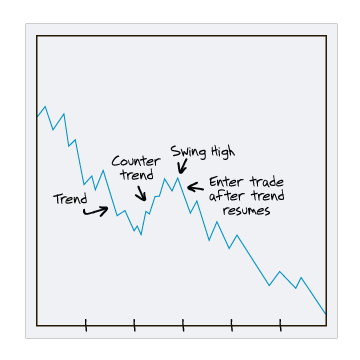How a Conservative Investor Uses Options to Reduce Risk Option Ideas
Post on: 31 Май, 2015 No Comment

Share | Subscribe
For many investors, options are seen as a speculative tool for short-term swing trades that may have a very high risk component. However, there are specific options strategies that have always been used by very conservative investors and institutions.
In this article, we’ll discuss options strategies that even the most conservative investors can use to lower risk and protect the value of long-term holdings. These guidelines will illustrate some of the safest ways to use options without incurring high risk exposure.
Follow the ‘Fundamentals’ on Stock Selection
Perhaps the most important consideration for a conservative investor is to not change your selection criteria to accommodate options. Continue to select stocks that meet your long-term objectives. Do not be distracted into creating a strategy that will lead you to purchasing stocks that have a higher risk profile just so you can invest with options. Those traders who purchase a stock primarily for the options that are available on that stock are likely ignoring fundamentals. That approach is probably more speculative than the risk tolerance a conservative investor will allow.
Some options strategies are specifically designed for stocks that are, in the short-term, expected to stay relatively flat or temporarily drop in value. Other options strategies are designed to take advantage of short-term price volatility. These different approaches assist a conservative investor in making additional profits without selling the stocks held in their portfolio and without increasing risk.
Options Have No ‘Fundamental’ Aspects
Options are only contacts. They do not have Balance Sheets, Income Statements, P/E ratings, analyst opinions, etc. Options are derivatives which have value based upon the price movements of their underlying stock. Therefore, for the conservative investor, the stock’s fundamentals are paramount.
Be Prepared to Reinvest Profits
Some of the most conservative options strategies will allow you to sell a stock at a premium over the current value of the stock. Other option strategies will allow you to acquire a stock at a discount from the current offering price of a stock. Because of this, you should always have a number of other companies that meet your investment criteria in a watch portfolio. The shares in these companies will be purchased when you reinvest funds received from an option strategy that closes you out of a position.
Tips for Placing Options Orders
1) Practice with a ‘virtual’ account. To get a good handle on how options react to a variety of market conditions, use your broker’s virtual money platform for a number of trades before applying the options strategies to real money.
2) Use only ‘debit’ trades. There are a number of options strategies that will bring funds into your account immediately. These are called credit trades. When using credit trades, you are usually entering a more speculative investment than is normally made by a conservative investor.
3) Restrict the use of options strategies to only those stocks that have a high average daily volume. For most cases this means at least one million shares traded per day. 4) When selecting a specific option, look for only those that have a high Open Interest; generally at least 1,000.
5) Choose only options that have a small Bid/Ask spread. Those options with a spread of less than $0.10 generally give you better fills and will be easiest to close at a good price.
6) Do not purchase options that are far Out of the Money. These options decay very quickly.
7) Do not purchase options with only a few days left until expiration.
Some Typical Conservative Options Strategies
Covered Call
This is considered the most conservative of all options strategies. Some say that it is even more conservative than buying only the stock. It is often used within IRA accounts. A conservative investor can approach the Covered Call from two perspectives.
Generate Regular Income:
This approach can be used to generate regular monthly or weekly income without selling shares of the company. You use this strategy with stocks that you hold if your expectations are that the stock price is not likely to increase over the near term, or might even go down a bit over the short-term.
Sell Stocks at a premium above the current price:
This approach can be used on a stock with which you would be comfortable selling, but only at a price that you stipulate. This is used for a stock that you are not in a hurry to sell. The sale of the Call may eventually take the stock from you, but at the price that you set when you sold the option.

Using Puts for Insurance
You might use this strategy with a stock that has increased in value rapidly, but which you expect may suffer a reversal in the short-term. Because of its fundamentals, you prefer to keep the stock for the long-term and do not want to sell your position just to reap current profits.
A Put will go up in value if the underlying stock goes down in value. If purchase Put contracts against shares that you own and the stock’s price goes down, you can sell the Put at a higher price than you paid for it and reap a profit while the stock’s price is declining. If the stock’s price does not decrease over the term of the Put contract, the premium that you paid for the option is insurance, i.e. the cost of protection for that period.
Using LEAPS® for a Future Purchase at a Price That You Select
LEAPS are option contracts that last for as long as 30 months. Use this type of option when you have a company with fundamentals that meet your investment criteria, but you want to wait for a period of time before making the purchase. Perhaps you don’t have the current liquidity to make a purchase now. Or, maybe you just want to wait for a while and time your purchase of the stock at a more desirable price.
However, you are concerned about waiting too long to make the purchase. You think that the company’s stock price may increase to a level that could be higher than would give you an acceptable return on investment.
If you purchase a LEAPS® Call option, you can purchase the stock months later at the strike price of your option — even if the stock is then selling at a higher price. If you were wrong about the expected increase in the stock’s price and the stock price never goes above the option’s strike price, the premium that you paid for the option is lost. But, the loss is probably significantly less than what you would have incurred if you had purchased the stock and then sold it at a loss.
Cash Secured Put
Let’s say that you have researched a company that meets your investment criteria for a mid-term to long-term investment. However, you expect that in the short-term the stock’s price may drop. With this approach, you hold sufficient funds in cash to make the purchase of the stock at a specific price that you determine. If the stock drops down to your predetermined price, your Put option will have the stock ‘put’ to you at the price that you selected.
There are a wide variety of Options strategies. These Options trades are not for only short-term speculators. A number of options strategies fulfill the objectives of a Conservative investor. There are specific options strategies that can be used to protect the value of a portfolio. There are also ways to use Options that can increase a portfolio’s value and income without increasing risk.
You can learn more about different types of option strategies by downloading our free options booklet: 3 Smart Ways to Make Money with Options (Two of Which You Probably Never Heard About). Just click here.
And be sure to check out our Zacks Options Trader.
Disclosure: Officers, directors and/or employees of Zacks Investment Research may own or have sold short securities and/or hold long and/or short positions in options that are mentioned in this material. An affiliated investment advisory firm may own or have sold short securities and/or hold long and/or short positions in options that are mentioned in this material.














